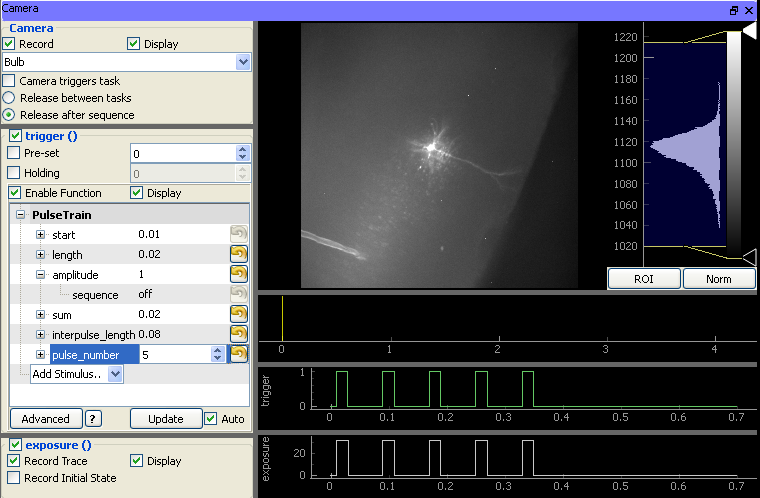In the ever-evolving landscape of web development, build tools and task runners are the unsung heroes working behind the scenes. While headlines are often dominated by the latest Vite News or advancements in bundlers like Webpack and Turbopack, a seasoned and powerful tool, Gulp.js, continues to be an indispensable asset for countless developers. Gulp’s enduring relevance stems from its unique philosophy: leveraging the power of Node.js streams to create fast, efficient, and highly customizable build pipelines.
Unlike configuration-heavy alternatives, Gulp operates on a code-over-configuration principle. You write simple, isolated JavaScript functions (tasks) and chain them together using a readable and intuitive API. This approach provides unparalleled flexibility, allowing you to automate virtually any repetitive development task, from compiling Sass and optimizing images to running complex deployment scripts. While the latest React News might focus on integrated development environments, understanding a tool like Gulp gives you foundational control over your entire asset pipeline. This article provides the latest Gulp News, diving deep into its core concepts, practical implementations, advanced techniques, and its place in the modern developer’s toolkit.
Understanding the Core of Gulp: Streams, Tasks, and Plugins
Gulp’s elegance lies in its simplicity and its foundation on core Node.js principles. To master Gulp, you must first understand its three pillars: streams, tasks, and plugins. This combination is what makes it so powerful and efficient for handling file-based operations.
The Power of Node.js Streams
At its heart, Gulp is a stream-based build system. Instead of reading a file from the disk, processing it, and writing it back to the disk for the next step, Gulp pipes data through a series of in-memory operations. Imagine an assembly line: a file gets on the conveyor belt (gulp.src), passes through several stations (plugins via .pipe()) that modify it, and finally comes off the line at the end (gulp.dest). This process avoids the significant overhead of intermediate file I/O, making Gulp remarkably fast for multi-step build processes. This is a key differentiator when comparing it to older tools like Grunt, which often created temporary files between steps.
Defining Tasks with the Gulp API
In Gulp, everything is a task. A task is simply a JavaScript function that performs an action. The Gulp API provides a few essential functions to create these tasks:
gulp.src(globs): This function reads files from the filesystem that match the provided glob pattern(s) and creates a readable stream of vinyl file objects.gulp.dest(directory): This function creates a writable stream that writes file objects back to the filesystem. It’s the destination for your processed files..pipe(): The real workhorse. This is a standard Node.js stream method used to connect the output of one stream (or plugin) to the input of another.gulp.series(...tasks): A function that runs a sequence of tasks one after another.gulp.parallel(...tasks): A function that runs a set of tasks concurrently.
Let’s see a fundamental example: compiling a Sass file into CSS. First, you’ll need to install the necessary packages: npm install --save-dev gulp gulp-sass sass.
// gulpfile.js
const gulp = require('gulp');
const sass = require('gulp-sass')(require('sass'));
// Define a task to compile SCSS to CSS
function compileSass() {
return gulp.src('./src/scss/**/*.scss') // 1. Source: Find all .scss files
.pipe(sass().on('error', sass.logError)) // 2. Pipe: Run the sass compiler plugin
.pipe(gulp.dest('./dist/css')); // 3. Destination: Output the result to the dist/css directory
}
// Export the task to make it runnable from the command line
exports.sass = compileSass;In this example, the compileSass function gets all .scss files, pipes them through the gulp-sass plugin, and outputs the resulting CSS files to the dist/css folder. This simple, readable structure is a hallmark of Gulp.
Building a Modern Frontend Workflow with Gulp
While a single task is useful, Gulp’s true power is unleashed when you combine multiple tasks to create a comprehensive build workflow. Let’s build a more realistic gulpfile.js that handles CSS preprocessing, JavaScript minification, and image optimization, along with a watch task for live development.

Orchestrating a Complete Build Process
A typical project requires more than just Sass compilation. You’ll want to handle JavaScript, optimize images, and perhaps clean your output directory before each build. We can use gulp.series() and gulp.parallel() to manage the execution order.
First, let’s install the required plugins: npm install --save-dev gulp gulp-terser gulp-imagemin gulp-autoprefixer del.
Now, let’s construct a full gulpfile.js:
// gulpfile.js
const gulp = require('gulp');
const sass = require('gulp-sass')(require('sass'));
const terser = require('gulp-terser');
const imagemin = require('gulp-imagemin');
const autoprefixer = require('gulp-autoprefixer');
const { deleteAsync } = require('del');
// --- Task Definitions ---
// Clean the distribution directory
function clean() {
return deleteAsync(['dist']);
}
// Compile SCSS, add vendor prefixes, and output to dist
function styles() {
return gulp.src('src/scss/**/*.scss')
.pipe(sass({ outputStyle: 'compressed' }).on('error', sass.logError))
.pipe(autoprefixer({
cascade: false
}))
.pipe(gulp.dest('dist/css'));
}
// Minify JavaScript files and output to dist
function scripts() {
return gulp.src('src/js/**/*.js')
.pipe(terser())
.pipe(gulp.dest('dist/js'));
}
// Optimize images
function images() {
return gulp.src('src/images/**/*')
.pipe(imagemin())
.pipe(gulp.dest('dist/images'));
}
// Watch for changes in source files
function watchFiles() {
gulp.watch('src/scss/**/*.scss', styles);
gulp.watch('src/js/**/*.js', scripts);
gulp.watch('src/images/**/*', images);
}
// --- Task Orchestration ---
// Define complex build tasks
const build = gulp.series(clean, gulp.parallel(styles, scripts, images));
const dev = gulp.series(build, watchFiles);
// Export tasks for command-line access
exports.clean = clean;
exports.styles = styles;
exports.scripts = scripts;
exports.images = images;
exports.build = build;
exports.dev = dev;
exports.default = dev; // Default task when running `gulp`This file defines several single-purpose tasks and then combines them. Running gulp build will first clean the dist directory and then run the styles, scripts, and images tasks in parallel for maximum efficiency. Running gulp or gulp dev will perform an initial build and then start watching for file changes, automatically re-running the relevant task. This setup provides a robust foundation for projects of any scale, whether you’re working with vanilla JS or managing assets for a Vue.js News or Angular News application.
Advanced Techniques and Modern Integrations
Gulp’s flexibility extends far beyond basic asset compilation. You can integrate it with other tools, handle errors gracefully, and leverage modern JavaScript features to create sophisticated and resilient build systems.
Graceful Error Handling
One common pitfall, especially with watch tasks, is a build process that crashes on a simple syntax error. By default, an error in a plugin will stop the entire stream, terminating your watch task. To prevent this, you can use a plugin like gulp-plumber or attach an error handler directly to your stream.
const gulp = require('gulp');
const sass = require('gulp-sass')(require('sass'));
const plumber = require('gulp-plumber');
// A more robust styles task with error handling
function stylesWithPlumber() {
return gulp.src('src/scss/**/*.scss')
.pipe(plumber()) // Prevents the watch task from crashing on error
.pipe(sass({ outputStyle: 'compressed' }).on('error', sass.logError))
.pipe(gulp.dest('dist/css'));
}
exports.styles = stylesWithPlumber;Using plumber ensures that if you make a mistake in your Sass file, the error will be logged to the console, but the Gulp process will continue running, allowing you to fix the error and see the changes reflected without restarting your watcher.
Integrating Gulp with Bundlers like Webpack
In the modern era of JavaScript modules, bundlers like Webpack and Rollup are essential. The latest Webpack News often highlights its powerful capabilities for dependency management and code splitting. However, this doesn’t make Gulp obsolete. In fact, they can work together beautifully. You can use Webpack for what it does best—bundling JavaScript—and use Gulp for everything else, like image optimization, SVG sprite generation, or static asset management. This is particularly useful in complex projects built with frameworks discussed in Next.js News or Nuxt.js News.

You can create a Gulp task that invokes Webpack via its Node API. This allows you to integrate Webpack’s bundling process directly into your Gulp-managed workflow.
Leveraging Async/Await in Gulp Tasks
Gulp 4 has excellent support for asynchronous tasks. You can return a stream (as shown in the examples above), a Promise, or use an async/await function. Using async/await can make complex, non-stream-based tasks much more readable, such as tasks that involve fetching data from an API or interacting with a database during the build process. This aligns Gulp with modern Node.js News and best practices.
Best Practices, Optimization, and Gulp’s Future
To get the most out of Gulp, it’s important to follow best practices and understand its place in the current tooling ecosystem, which includes updates from the worlds of Deno News and Bun News.
Best Practices for Maintainable Gulpfiles
- Keep Tasks Small and Focused: Each task should have a single responsibility. This makes them easier to debug, reuse, and compose into more complex workflows.
- Organize Your Gulpfile: For large projects, consider splitting your Gulp tasks into multiple files in a dedicated
gulp/tasksdirectory and importing them into your maingulpfile.js. - Use `gulp-load-plugins`: This utility can automatically load all Gulp plugins from your
package.json, simplifying the top of your Gulpfile and reducing boilerplate. - Document Your Tasks: Leave comments explaining what each complex task does. Your future self (and your teammates) will thank you.
Performance Optimization
While Gulp is fast by nature, you can optimize it further. Use plugins like gulp-changed or gulp-cache to ensure that tasks only process files that have actually changed since the last run. This can dramatically speed up builds in projects with thousands of assets. For instance, you wouldn’t want to re-optimize your entire image library every time you change a single CSS file.
Gulp’s Role in a Post-Bundler World
With the rise of all-in-one tools like Vite, which offer lightning-fast development servers and optimized builds out of the box, one might question Gulp’s relevance. However, Gulp’s strength was never just about bundling JavaScript. Its power lies in its unopinionated, stream-based approach to file manipulation.
Gulp excels at tasks that bundlers don’t typically handle or handle clumsily:
- Complex Asset Pipelines: Optimizing images, generating SVG sprites, compressing fonts.
- Static Site Generation: Processing Markdown files, injecting data into HTML templates.
- Deployment Automation: Running tests with tools like Cypress or Playwright, pushing builds to a server via SSH, or invalidating a CDN cache. The latest Cypress News often focuses on test automation, which Gulp can seamlessly trigger.
- Backend Workflows: In a NestJS News or Express.js News context, Gulp can be used to transpile TypeScript, restart the server on changes, and run database migrations.
Gulp is not a competitor to Vite or Webpack; it’s a powerful companion. It fills the gaps, providing a universal “glue” to connect different parts of your development and deployment process with simple, maintainable JavaScript code.
Conclusion: The Enduring Power of Task Automation
Gulp.js remains a powerful and relevant tool in 2024. Its code-over-configuration philosophy and efficient stream-based processing provide a level of control and flexibility that is hard to match. While modern bundlers have streamlined JavaScript development, the need for robust, custom task automation has not disappeared. Gulp excels as a universal task runner, capable of handling everything from asset optimization and code compilation to triggering test suites and automating complex deployment scripts.
By mastering its core concepts of streams, tasks, and plugins, you can build clean, efficient, and maintainable build pipelines tailored to your project’s specific needs. Whether you’re working with a legacy project or complementing a modern framework like Svelte or SolidJS, Gulp offers a time-tested solution for automating the repetitive tasks that stand between you and your creative work. The next time you find yourself needing to automate a file-based workflow, remember the power and simplicity that Gulp brings to the table.

